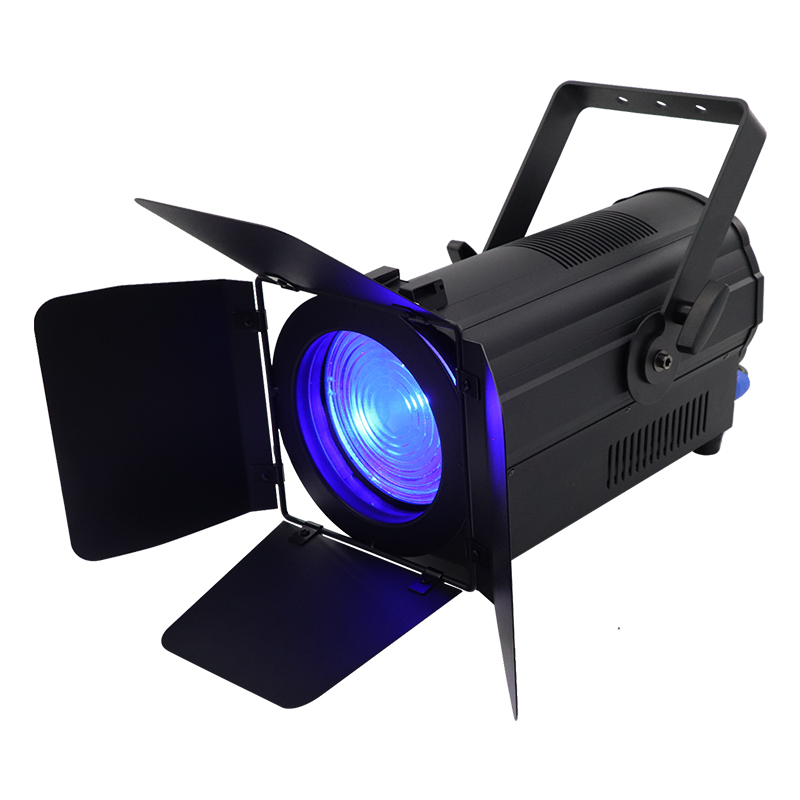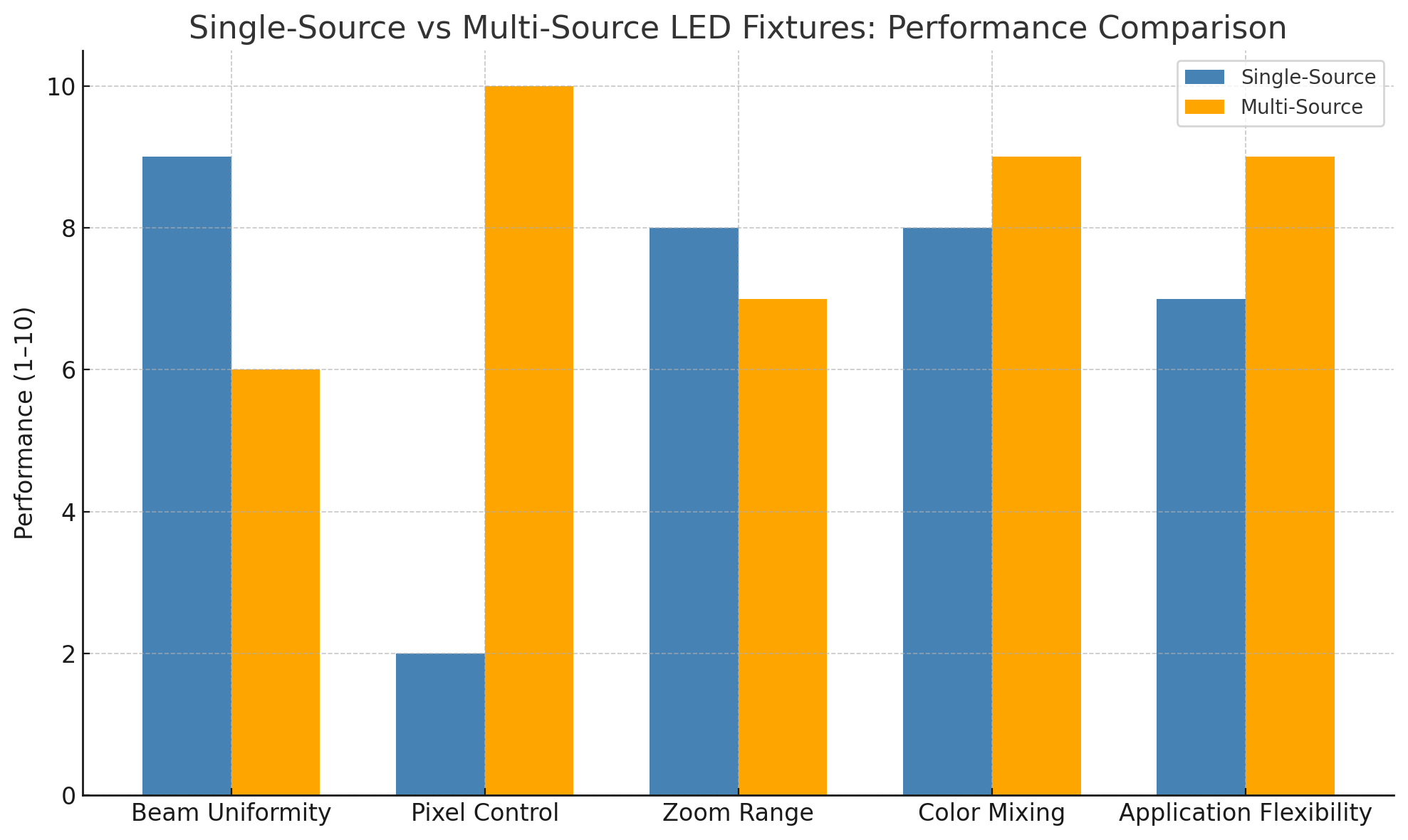As LED lighting technology evolves, designers and technicians are increasingly faced with a fundamental choice: single-source or multi-source LED fixtures? While both categories provide high-efficiency illumination, they differ greatly in how they manage light output, control options, and design flexibility.
This article breaks down the essential differences between the two, offers guidance for specific use cases, and introduces two industry-proven fixtures that exemplify each type.
1. Understanding the Light Sources
What Is a Single-Source LED Fixture?
A single-source LED fixture uses one powerful diode or COB (chip-on-board) array to emit light. This results in a clean, smooth beam with a uniform edge.
Benefits:
Soft, even output
Minimal shadowing
Easier lens and filter compatibility
Example:
200W RGBW LED Fresnel Zoom Light DMX
This fixture delivers excellent color mixing from a single point, coupled with a wide zoom range of 15°–50°, making it ideal for theater, film, or studio lighting applications.

What Is a Multi-Source LED Fixture?
A multi-source fixture incorporates multiple individual LEDs—often arranged in a grid or ring—each capable of independent color and intensity control. These fixtures are popular for dynamic effects and pixel-mapping.
Benefits:
Advanced visual effects (e.g., pixel runs, ring patterns)
Versatile color layers
Greater audience engagement in live environments
Example:
19pcs 40W BEE EYE Rotating Pixel Zoom Wash LED Moving Head Light
With 19 individually controllable 40W LEDs, this unit excels at creating dynamic movement and wide washes, particularly in concerts or large-scale events.
![]()
2. Beam Quality and Uniformity
Single-source fixtures typically produce a more consistent and symmetrical beam, ideal for precision applications like key lighting, backlight, or architectural spots.
In contrast, multi-source LEDs can show slight inconsistencies at short distances, especially when projecting tightly focused beams.
Verdict: For critical visibility or soft-focused looks, single-source wins.
3. Pixel Mapping and Visual Effects
This is where multi-source units shine. Pixel-mappable fixtures allow designers to treat each LED as a visual pixel, opening creative doors for matrix animation, color chases, and audio-reactive sequences.
Single-source LEDs do not support pixel control, limiting them to full-beam static or fading effects.
Verdict: For stage shows, clubs, or TV, multi-source is a must.
4. Color Mixing and Shadow Control
Multi-source designs can introduce multi-shadowing when used improperly or too close to a surface. The individual LEDs cast overlapping shadows, which may appear unnatural in camera or theatrical settings.
By contrast, single-source units achieve smoother transitions and shadow-free color mixing, crucial for front fills or studio lighting.
Verdict: Choose single-source for broadcast and photography.
5. Zoom and Optics
The zoom mechanism in single-source Fresnels or profiles offers predictable spread and edge control. Their lens systems maintain uniformity through the entire zoom range.
Multi-source units, while increasingly sophisticated, may experience beam gaps or internal flare when zoomed wide.
Verdict: Single-source for theatrical control; multi-source for broader wash.
6. Maintenance and Cost
Single-source LEDs have fewer internal parts, making them easier to clean and maintain. However, replacing a COB module may require full disassembly.
Multi-source LEDs allow partial operation even if one diode fails—but cleaning is more tedious due to individual lenses.
Verdict: Equal, depending on context.

Conclusion: Which Fixture Suits Your Needs?
If you need:
Soft light
Clean beams
Camera-friendly output
Choose single-source fixtures like the 200W RGBW LED Fresnel Zoom Light DMX.
If you want:
Eye-catching effects
Pixel control
Versatile live performance lighting
Choose multi-source fixtures like the 19pcs 40W BEE EYE Rotating Pixel Zoom Wash LED Moving Head Light.
READ MORE:





Blue Sea Lighting is an enterprise with rich experience in the integration of industry and trade in stage lighting and stage special effects related equipment. Its products include moving head lights, par lights, wall washer lights, logo gobo projector lights, power distributor, stage effects such as electronic fireworks machines, snow machines, smoke bubble machines, and related accessories such as light clamps.
Quick Links
For more questions subscribe to our email








